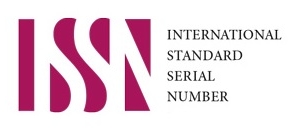Keywords cloud
4. The dynamics of servo drives
Page: Kosm. teh. Raket. vooruž. 2024, (1); 29-39
DOI: https://doi.org/10.33136/stma2024.01.029
Language: Ukrainian
Key words: electric drive, servo drive, reducer, stability, mathematical model.
- Kozak L. Dynamika servomechanismov raketnoy techniki. Inzhenernye metody issledovaniya. Izd-vo LAP LAMBERT Academic Publiching, Germania. 2022.
- Kozak L. R., Shakhov M. I. Matematicheskie modely hydravlicheskikh servomekhanismov raketno-kosmicheskoy techniki. Kosmicheskaya technika. Raketnoe vooruzhenie. 2019. Vyp. 1.
Full text (PDF) || Content 2024 (1)
| Country | City | Downloads |
|---|---|---|
| USA | San Jose; Raleigh; New York City; Columbus; Buffalo; Ashburn; Phoenix; Phoenix; Phoenix; Phoenix; Phoenix; Phoenix; Phoenix; Phoenix; Phoenix; Phoenix; Phoenix; Phoenix; El Monte; El Monte; Seattle; Ashburn; Ashburn; Ashburn; Ashburn; Mountain View; Mountain View; Washington; Portland; Portland; San Mateo; San Mateo; Ashburn; Ashburn; Ashburn; Pompano Beach | 36 |
| China | Pekin; Shenzhen;; Pekin; Hangzhou | 5 |
| Germany | Falkenstein; Düsseldorf; Falkenstein; Leipzig; Leipzig | 5 |
| Canada | Toronto; Toronto; Toronto | 3 |
| Singapore | Singapore; Singapore | 2 |
| France | ; Paris | 2 |
| Unknown | ; | 2 |
| The Republic of Korea | ; Seoul | 2 |
| Ukraine | Kremenchuk; Kremenchuk | 2 |
| Netherlands | Amsterdam | 1 |
10. Calculation of Gas Flow in High-Altitude Engine Nozzle and Experience of Using Water-Cooled Nozzle Head during Tests
Yangel Yuzhnoye State Design Office, Dnipro, Ukraine
Page: Kosm. teh. Raket. vooruž. 2018 (2); 83-93
DOI: https://doi.org/10.33136/stma2018.02.083
Language: Russian
Key words: turbulent flow, flow separation, cooling, technological extension
Full text (PDF) || Content 2018 (2)
| Country | City | Downloads |
|---|---|---|
| USA | Boardman; Ashburn; Matawan; Baltimore; North Bergen; Plano; Dublin; Columbus; Phoenix; Phoenix; Phoenix; Phoenix; Phoenix; Phoenix; Phoenix; Phoenix; Phoenix; Phoenix; Phoenix; Phoenix; Phoenix; Phoenix; Phoenix; Phoenix; Monroe; El Monte; Ashburn; Columbus; Columbus; Ashburn; Mountain View; Ashburn; Ashburn; Mountain View; Seattle; Tappahannock; Portland; San Mateo; San Mateo; San Mateo; Des Moines; Boardman; Boardman; Ashburn; Ashburn; Ashburn; Ashburn; Ashburn; Ashburn; Ashburn; Pompano Beach | 51 |
| Singapore | Singapore; Singapore; Singapore; Singapore; Singapore; Singapore; Singapore; Singapore; Singapore; Singapore | 10 |
| Canada | Toronto; Toronto; Toronto; Toronto; Toronto; Monreale | 6 |
| Unknown | Hong Kong; | 2 |
| Netherlands | Amsterdam; Amsterdam | 2 |
| Belgium | Brussels | 1 |
| Finland | Helsinki | 1 |
| France | Paris | 1 |
| Germany | Falkenstein | 1 |
| Romania | Voluntari | 1 |
| Ukraine | Dnipro | 1 |
9. Methodology for selecting design parameters of solid-propellant sustainer engines. Mathematical support and software
Yangel Yuzhnoye State Design Office, Dnipro, Ukraine
Page: Kosm. teh. Raket. vooruž. 2023 (1); 77-87
DOI: https://doi.org/10.33136/stma2023.01.077
Language: Ukrainian
Key words: multifunctional system, mathematical model, military unit, combat potential, correlation of forces, defensive sufficiency
1. Pavlyuk Yu. S. Ballisticheskoe proektirovanie raket: ucheb.-metod, posobie dlya vuzov. UDK623.451.8. Izd-vo ChGTU, Chelyabinsk, 1996. 92 s.
2. Nikolaev Yu. M., Solomonov Yu. S. Inzhenernoe proektirovanie upravlyaemykh ballisticheskikh raket s RDTT. M., 1979. 240 s.
3. Enotov V. G., Kirichenko A. S., Pustovgarova Ye. V. Osobennosti rascheta i vybora raskhodnoy diagrammy dvukhrezhimnykh marshevykh RDTT: ucheb.-metod. posobie. Pod red. akadem. A. V. Degtyreva. Dnepr, 2019. 68 s.
4. Enotov V. G., Kushnir B. I., Pustovgarova Ye. V. Metodika-programma proektnoy otsenki characteristic marshevykh dvigateley na tverdom toplive s korpusami iz vysokoprochnykh metallicheskikh materialov, statsionarnymi soplami i postanovka ee na avtomatizirovanniy raschet: ucheb.-metod. posobie. Vtoroe izd., pererabot. i dop. Pod red. A. S. Kirichenko. Dnep, 2019. 91 s.
5. Enotov V. G., Kirichenko A. S., Kushnir B. I., Pustovgarova Ye. V. Metodika proektnoy otsenki characteristic marshevykh dvigatelnykh ustanovok na tverdom toplive s povorotnymi upravlyayuschimi soplami, plastikovymi tselnomotannymi korpusamy i postanovka ee na avtomatizirovanniy raschet: ucheb.-metod. posobie. Vtoroe izd., pererabot. i dop. Pod red. akadem. A. V. Degtyareva. Dnepr. 2019. 149 s.
6. Alemasov V. Ye., Dregalin A. F., Tishin A. P. Teoriya raketnykh dvigateley. M., 1980. 55 s.
7. Raschetnye materialy dlya podgotovki i vydachi iskhodnykh dannykh na razrabotku uzlov marshevykh dvigatelnykh ustanovok na tverdom toplive. Raschet ID metodom avtomatizirovannogo proektirovaniya operativno-takticheskikh raket: inzhenern. zapiska 553-376 IZ. GP «KB «Yuzhnoye». Dnepropetrovsk, 2017. 30 s.
8. Metodika avtomatizirovannogo proektirovaniya operativno-takticheskikh raket: nauch.-tekhn. Otchet 03-453/32 NTO. GP «KB «Yuzhnoye». Dnepropetrovsk, 2010. 127 s.
Full text (PDF) || Content 2023 (1)
| Country | City | Downloads |
|---|---|---|
| USA | Los Angeles; Ashburn; Columbus; Phoenix; Phoenix; Phoenix; Phoenix; Phoenix; Phoenix; Phoenix; Phoenix; Phoenix; Phoenix; Phoenix; Phoenix; El Monte; El Monte; Ashburn; Seattle; Ashburn; Ashburn; Mountain View; Portland; San Mateo; San Mateo; San Mateo; San Mateo; Ashburn; Ashburn; Pompano Beach; Seattle | 31 |
| Singapore | Singapore; Singapore; Singapore; Singapore | 4 |
| Canada | Toronto; Toronto; Toronto | 3 |
| Unknown | ; Hong Kong | 2 |
| China | Pekin | 1 |
| France | Paris | 1 |
| Germany | Falkenstein | 1 |
| Netherlands | Amsterdam | 1 |
| Ukraine | Kremenchuk | 1 |
1. On the development of a methodology for building air and missile defense systems. Explanation of the investigation mechanism
Yangel Yuzhnoye State Design Office, Dnipro, Ukraine
Page: Kosm. teh. Raket. vooruž. 2023 (1); 3-13
DOI: https://doi.org/10.33136/stma2023.01.003
Language: Ukrainian
Key words: multifunctional system, mathematical model, military unit, combat potential, correlation of forces, defensive sufficiency
- Korshunov Yu. M. Matematicheskie osnovy kibernetiki. M., 1972. 376 s.
- Pavlovskiy R. I., Karyakin V. V. Ob opyte primeneniya matematicheskih modeley. Voennaya mysl. № 3. S. 54-57.
- Katasonov Yu. V. SShA: voennoe programmirovanie. M., 1972. 228 s.
- Analiz opyta ministerstva oborony SShA po sovershenstvovaniyu systemy plannirovaniya i upravleniya razrabotkami vooruzhenniya. TsIVTI, otchet № 11152 po NIR. M., 1967.
- Sokolov A. Razvitie matemaicheskogo modelirovaniya boevyh deistviy v armii SShA. Zarubezhnoye voennoe obozrenie. № 8. S. 27-34.
- Chuev Yu. V. Issledovanie operatsiy v voennom dele. M., 1970. 256 s.
- Yevstigneev V. N. K voprosu metodologii matematicheskogo modelirovaniya operatsii. Voennaya mysl. № 17. S. 33-41.
- Fendrikov I., Yakovlev V. I. Metody raschetov boevoy effectivnosti vooruzhennia. M., 1971. 224 s.
- Neupukoev F. O podhode k otsenke boevyh vozmozhnostey i boevoy effectivnosti voisk. Voennaya mysl. № 11. S. 70-72.
- AgeevYu. D., Geraskin A. P. K voprosu o povyshenii dostovernosti otsenki sootnosheniya sil protivoborstvuyuschih storon. Voennaya mysl. № 4. S. 54-58.
- Aleshkin A. V. Otsenka i soozmerenie sil voyuuschih storon s uchetom kachestva sredstv porazhenya. Voennaya mysl. № 10. S. 69-76
- Ponomarev O. K. O metodah kolichestvennoy i kachestvennoy otsenki sil storon. Voennaya mysl. № 4. S. 41-46.
- Luzyanin V. P., Elizarov V. S. Podhod k opredeleniyu sostava gruppirovki sil i sredstv oboronnoy dostatochnosti. Voennaya mysl. № 11. S. 25-29.
- SpeshilovL. Ya., Pavlovskiy R. I., Kabysh A. I. K voprosu o kolichestvenno-kachestvennoy otsenke sootnosheniya sil raznorodnyh gruppirovok voisk. Voennaya mysl. № 5.
- . Strelchenko B. I., Ivanov V. A. Nekotoye voprosy otsenki sootnosheniya sil i sredstv v operatsii. Voennaya mysl. № 10. S. 55-61.
- Morozov N. A. O metodologii kachestvennogo analiza bolshih voennyh system. Voennaya mysl. № 7. S. 19-22.
- Terehov A. G. O metodike rascheta sootnosheniya sil v operatsii. Voennaya mysl. № 9. S. 51-57.
- Tsygichko V. A., Stokli F. Metod boevyh potentsialov. Istoria i nastoyaschee. Voennaya mysl. № 4. S. 23-28.
- BoninA. S. Osnovnye polozheniya metodicheskyh podhodov k otsenke boevyh potentsialov i boevyh vozmozhnostey aviatsionnyh formirovaniy. Voennaya mysl. № 1. S. 43-47.
- Bonin A. S., Gorchitsa G. I. O boevyh potentsialah obraztsov VVT, formirovaniy i sootnosheniyuah sil gruppirovok storon. Voennaya mysl. № 4. S. 61-67.
- SereginG. G., Strelkov N., Bobrov V. M. Ob odnom podhode k raschetu znacheniy boevyh potentsialov perspektivnyh sredstv vooruzhenniy. Voennaya mysl. 2005. № 10. S. 32-38. https://doi.org/10.1016/S1097-8690(05)70764-2
- Morozov N. A. Esche raz o boevyh potentsialah. Voennaya mysl. № 9. S. 75-79.
- Naryshkin V. G. O pokazatelyah boevogo potentsiala voinskyh formirovaniy. Voennaya mysl. № 1. S. 68-72.
- Kostin N. A. Metodologicheskiy podhod k opredeleniyu boevyh potentsialov voiskovyh formirovanniy. Voennaya mysl. № 10. S. 44-48
- Ostankov V. I. Obosnovanie boevogo sostava gruppirovok voisk (sil). Voennaya mysl. № 1. S. 23-28.
Full text (PDF) || Content 2023 (1)
| Country | City | Downloads |
|---|---|---|
| USA | Ashburn; Biscoe; Columbus; Columbus; Ashburn; Phoenix; Phoenix; Phoenix; Phoenix; Phoenix; Phoenix; Phoenix; Phoenix; Phoenix; Phoenix; Phoenix; Phoenix; El Monte; El Monte; Ashburn; Ashburn; Mountain View; San Mateo; San Mateo; Ashburn; Ashburn; Ashburn; Pompano Beach; Seattle | 29 |
| Singapore | Singapore; Singapore; Singapore; Singapore; Singapore; Singapore | 6 |
| Canada | Toronto; Toronto; Toronto; Toronto | 4 |
| Ukraine | Dnipro; Kremenchuk | 2 |
| Germany | Limburg an der Lahn; Falkenstein | 2 |
| Unknown | 1 | |
| France | Paris | 1 |
| Netherlands | Amsterdam | 1 |


